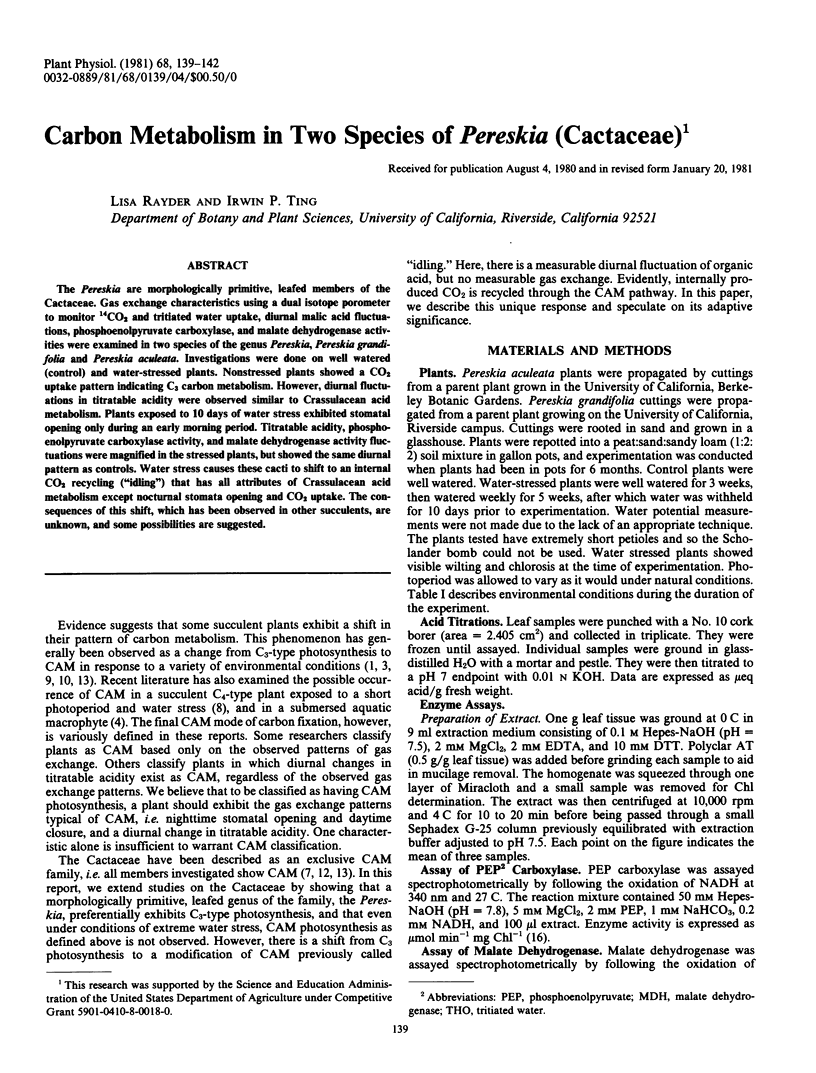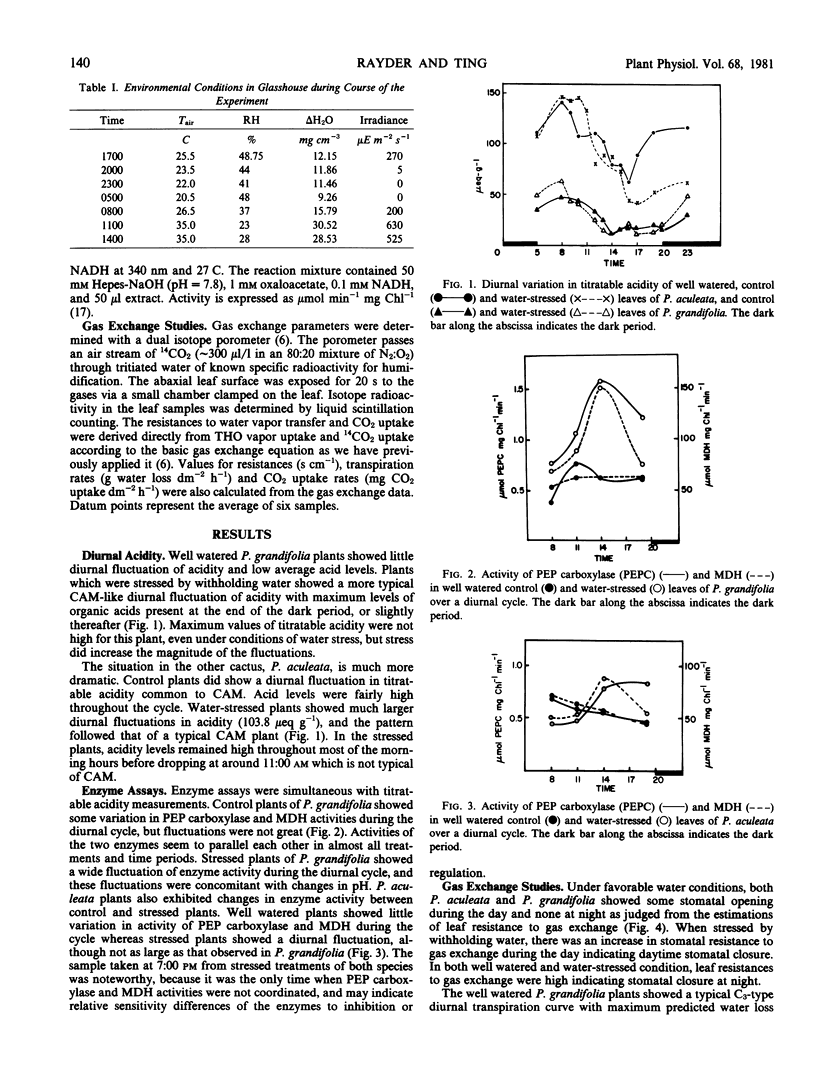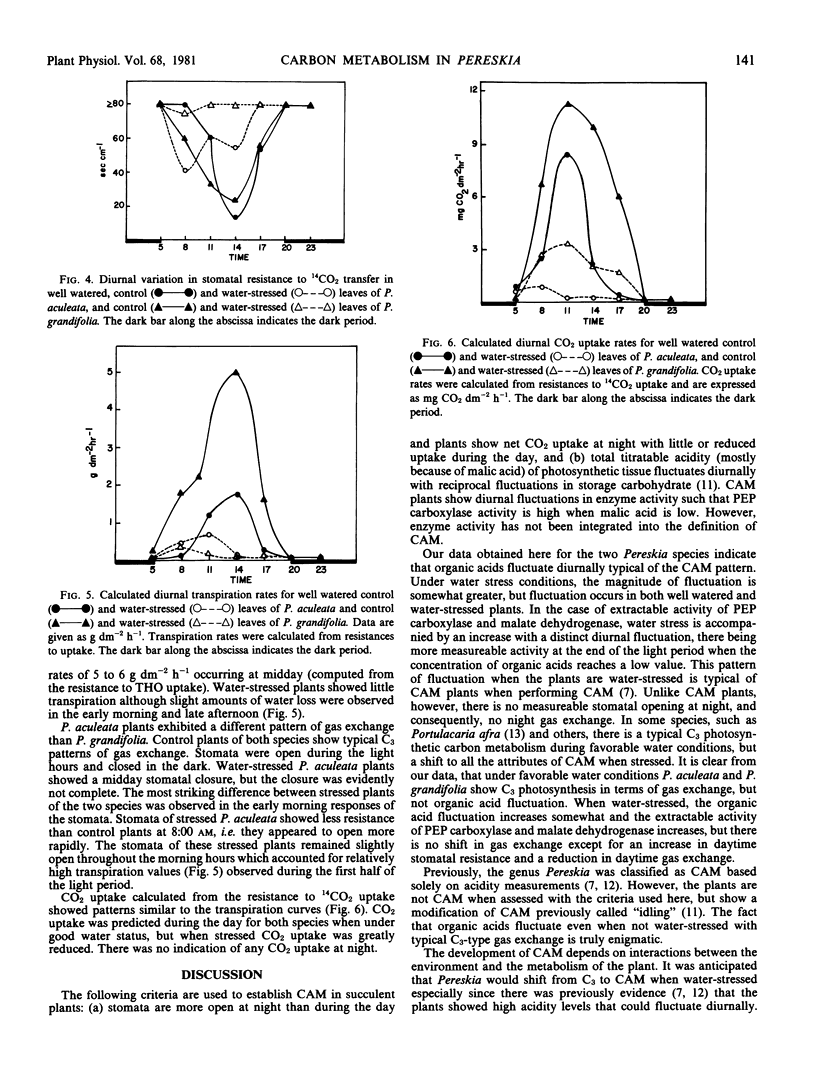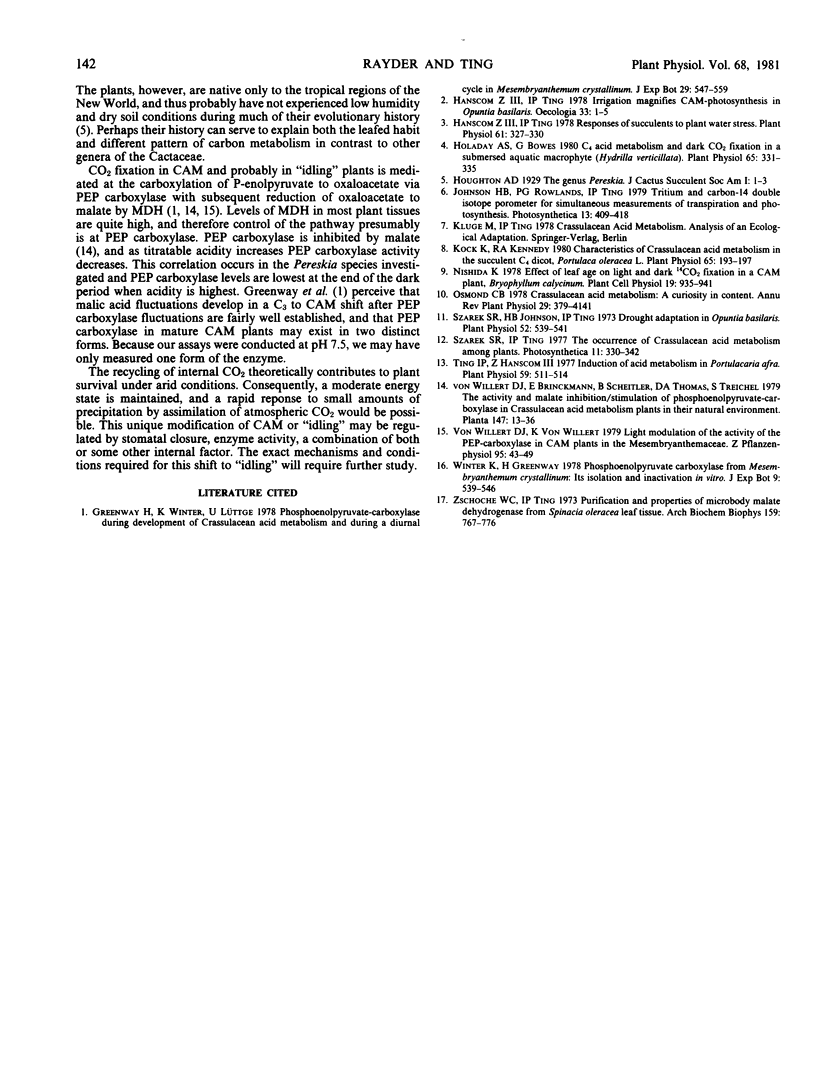Abstract
The Pereskia are morphologically primitive, leafed members of the Cactaceae. Gas exchange characteristics using a dual isotope porometer to monitor 14CO2 and tritiated water uptake, diurnal malic acid fluctuations, phosphoenolpyruvate carboxylase, and malate dehydrogenase activities were examined in two species of the genus Pereskia, Pereskia grandifolia and Pereskia aculeata. Investigations were done on well watered (control) and water-stressed plants. Nonstressed plants showed a CO2 uptake pattern indicating C3 carbon metabolism. However, diurnal fluctuations in titratable acidity were observed similar to Crassulacean acid metabolism. Plants exposed to 10 days of water stress exhibited stomatal opening only during an early morning period. Titratable acidity, phosphoenolpyruvate carboxylase activity, and malate dehydrogenase activity fluctuations were magnified in the stressed plants, but showed the same diurnal pattern as controls. Water stress causes these cacti to shift to an internal CO2 recycling (“idling”) that has all attributes of Crassulacean acid metabolism except nocturnal stomata opening and CO2 uptake. The consequences of this shift, which has been observed in other succulents, are unknown, and some possibilities are suggested.
Full text
PDF



Selected References
These references are in PubMed. This may not be the complete list of references from this article.
- Hanscom Z., Ting I. P. Responses of succulents to plant water stress. Plant Physiol. 1978 Mar;61(3):327–330. doi: 10.1104/pp.61.3.327. [DOI] [PMC free article] [PubMed] [Google Scholar]
- Holaday A. S., Bowes G. C(4) Acid Metabolism and Dark CO(2) Fixation in a Submersed Aquatic Macrophyte (Hydrilla verticillata). Plant Physiol. 1980 Feb;65(2):331–335. doi: 10.1104/pp.65.2.331. [DOI] [PMC free article] [PubMed] [Google Scholar]
- Koch K., Kennedy R. A. Characteristics of Crassulacean Acid Metabolism in the Succulent C(4) Dicot, Portulaca oleracea L. Plant Physiol. 1980 Feb;65(2):193–197. doi: 10.1104/pp.65.2.193. [DOI] [PMC free article] [PubMed] [Google Scholar]
- Szarek S. R., Johnson H. B., Ting I. P. Drought Adaptation in Opuntia basilaris: Significance of Recycling Carbon through Crassulacean Acid Metabolism. Plant Physiol. 1973 Dec;52(6):539–541. doi: 10.1104/pp.52.6.539. [DOI] [PMC free article] [PubMed] [Google Scholar]
- Ting I. P., Hanscom Z. Induction of Acid Metabolism in Portulacaria afra. Plant Physiol. 1977 Mar;59(3):511–514. doi: 10.1104/pp.59.3.511. [DOI] [PMC free article] [PubMed] [Google Scholar]


